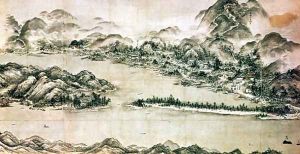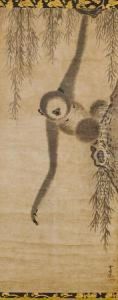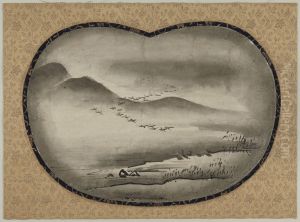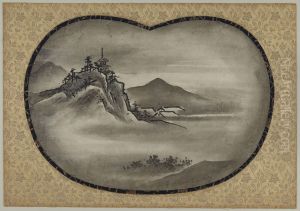Sesshu Toya Paintings
Sesshu Toyo, also known as Oda Toyo, was a prominent Japanese ink painter and Zen monk of the Muromachi period, renowned for his mastery of suiboku-ga, or monochrome ink painting. Born into the Oda family in the province of Bitchu (modern-day Okayama Prefecture), Sesshu showed an early inclination towards the arts and Zen Buddhism.
In 1440, Sesshu entered the Hofuku-ji monastery as a novice monk, where he practiced Zen and studied painting under the guidance of Tensho Shubun, a well-known painter of the time. Sesshu's early works were heavily influenced by his master and the Chinese Song Dynasty landscape paintings. He eventually became a Zen priest and continued to refine his art, blending his spiritual practice with his creative expression.
Sesshu's talent and reputation as an artist grew, and in 1468, he embarked on a pilgrimage to China, which was customary for Japanese Zen monks at the time. This trip had a profound influence on his artistic development. He closely observed Chinese landscapes, architecture, and artworks, and interacted with Chinese painters. Upon his return to Japan in 1469, Sesshu's style had evolved, integrating the bold and vigorous techniques learned from his experiences in China with the more subtle and refined Japanese aesthetic.
Throughout the latter half of the 15th century, Sesshu served various lords and temples as a painter and adviser. His most acclaimed works include long landscape scrolls, like the 'Long Scroll Landscape' and 'Haboku-Sansui' (Splashed Ink Landscape), which demonstrate his innovative approach to ink painting, characterized by dynamic brushwork and a profound sense of nature's spirit. These works have had a lasting influence on the development of Japanese ink painting, inspiring countless artists.
Sesshu's later years were marked by his dedication to teaching and painting. He established his own school in the province of Suo (present-day Yamaguchi Prefecture), where he instructed many pupils, passing on his techniques and philosophy. Sesshu Toyo's legacy is not only that of a great artist but also of a cultural bridge between Japan and China, and his works remain highly revered in both countries. He died in 1506, leaving behind a body of work that continues to be celebrated for its originality, depth, and technical prowess.



